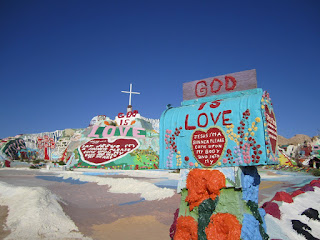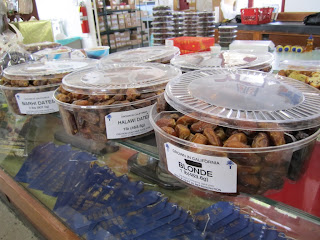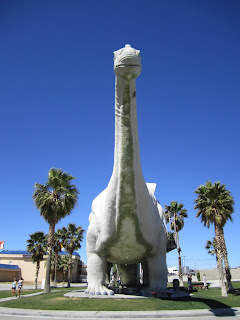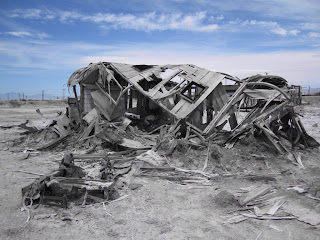.JPG)
The Willow Holes Trail hike in Joshua Tree National Park is a flat, 7 miles roundtrip – in and back – enjoyable hike. You walk among the Joshua Trees and then enter in the west side of the Wonderland of Rocks and end up in a canyon with water and willows, aka Willow Holes. We hadn’t expected to do this hike but had a change of plans when we arrived at the park.
The park web site lists nature walks (shorter) and day hikes (longer) so we selected the Lost Palms Oasis hike without knowing too much about the park. A hike to a fan palm (Washingtonia filifera) oasis sounded nice. So when we came, we entered from the south at the Cottonwood Visitor Center (from I-10) since that was closest to the planned hikes. That’s when we learned a little bit more about the park (two different deserts: Mojave and Colorado). The Lost Palms hike is in the Colorado part and while the hike is interesting we were recommended with the limited amount of time we had (1 day) to see the something in the Mojave desert and specifically to take in the Joshua trees (Yucca brevifolia) and Wonderland of Rocks.
So we drove about 35 miles across the park to the Boy Scout Trail head (located here) and hiked from there. The drive itself was nice as you get a good view of the different parts of the park and there are many scenic and informative (signed) pull-offs.
This was our first time in this park and we were impressed. The Joshua trees are really a treat to see, some of them righteous and upright, others with drooping, contorted branches looking cartoonish. The common name, Joshua tree, came from Mormon settlers passing through the desert in the 19th century who thought the tree resembled Joshua, a Hebrew Bible character, reaching up and praying. The scientific name of the Joshua tree, Yucca brevifolia, means a yucca with short leaves (brevifolia). The word “yucca” itself comes from the Carib language because early reports of the Yucca genus of shrubs and trees got confused with the cassava - a plant common where Carib was/is spoken. The genus Yucca is part of the agave (Agavaceae) family.
 Willow Holes Trail Map
Willow Holes Trail Map
 Willow Holes Trail Map
Willow Holes Trail Map




















.JPG)

